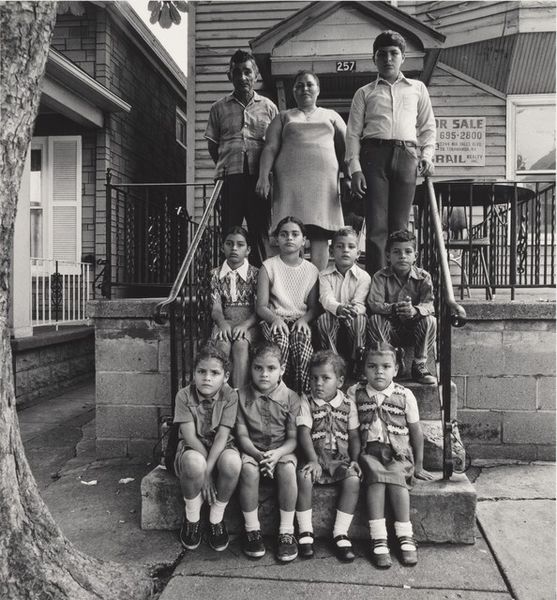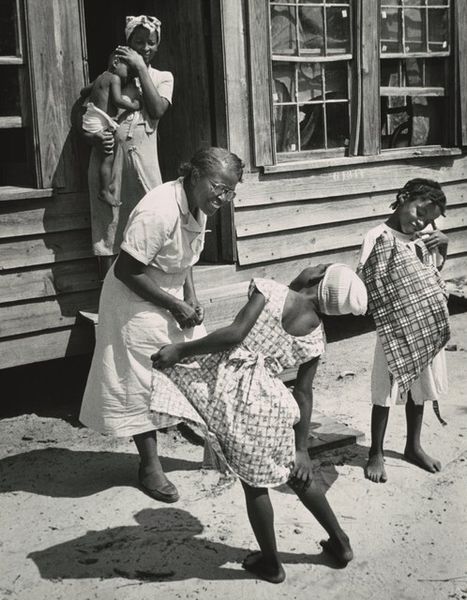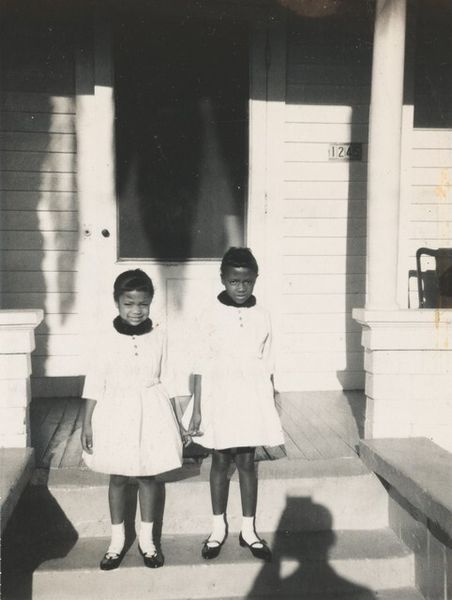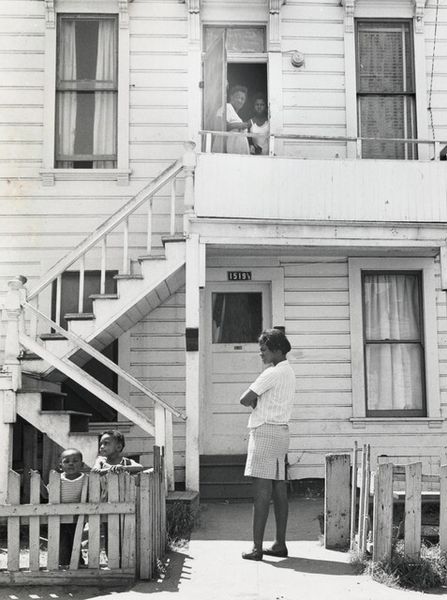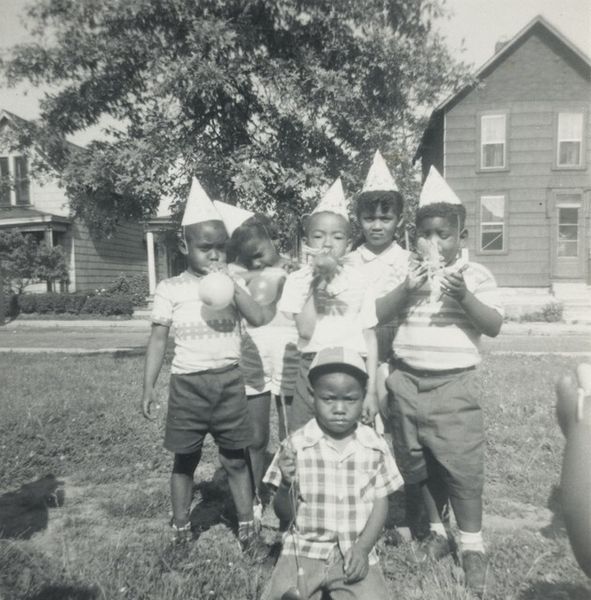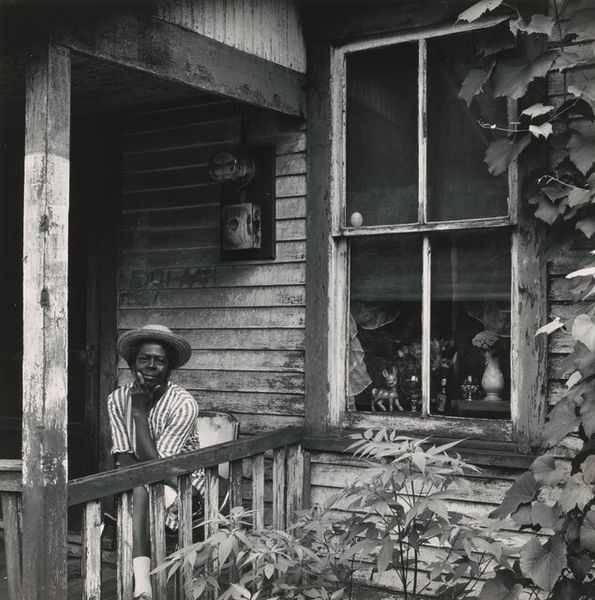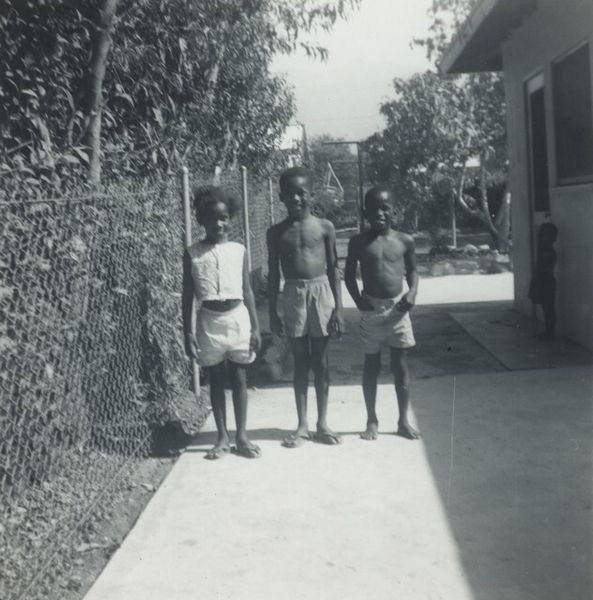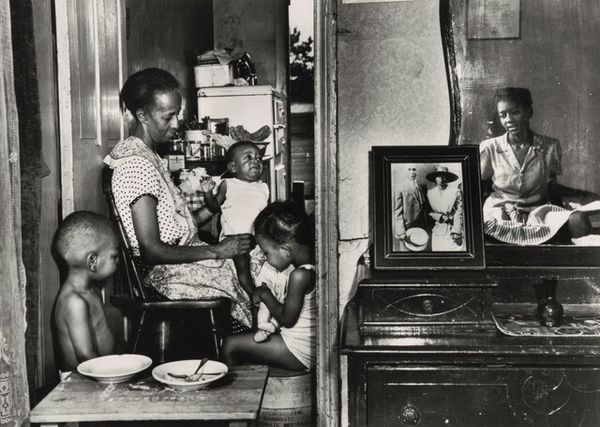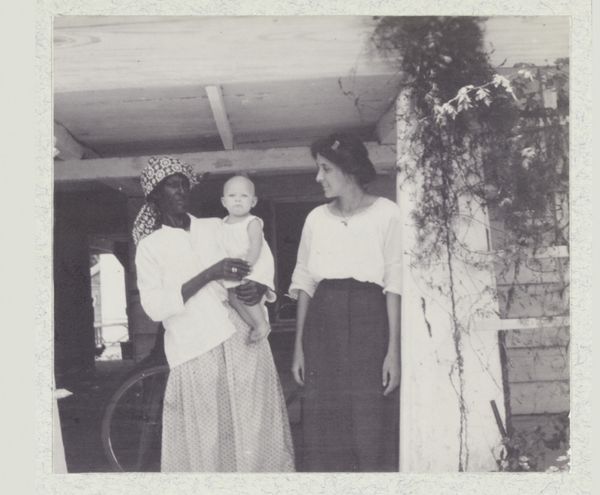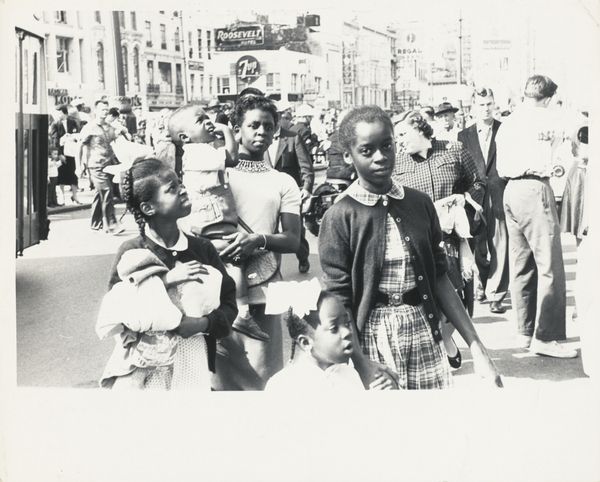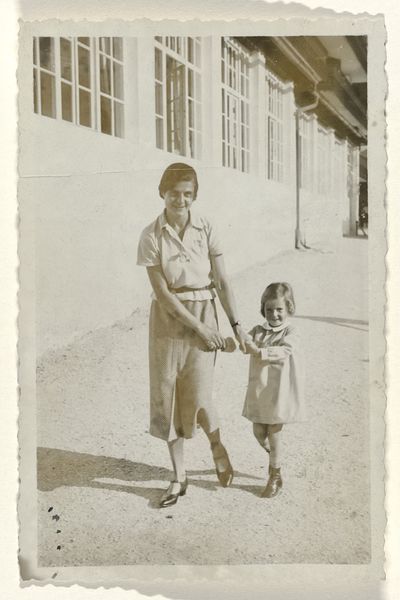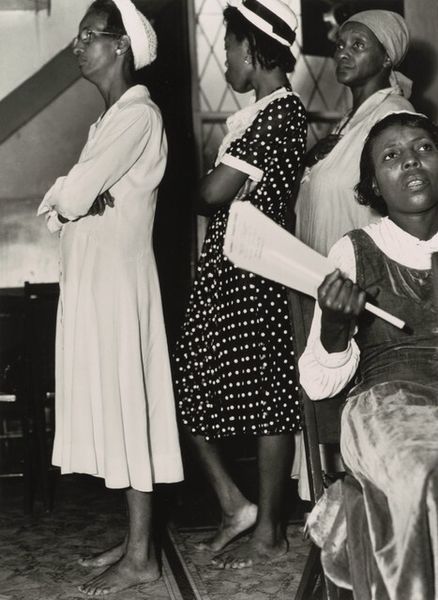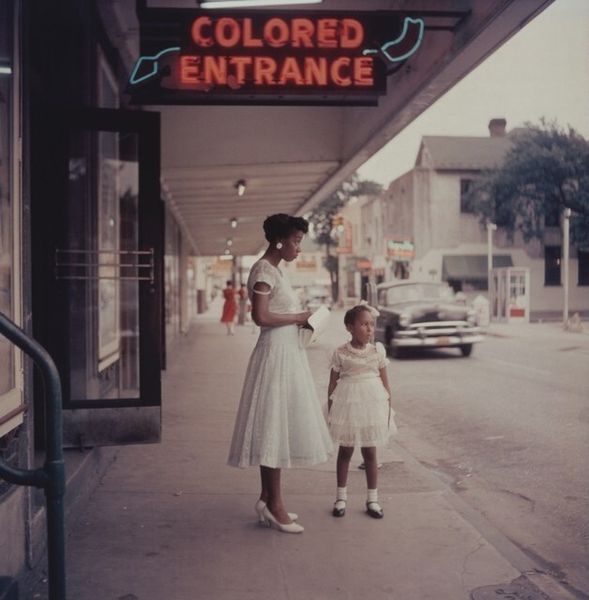
Dimensions: image: 7.6 × 7.8 cm (3 × 3 1/16 in.) sheet: 10.1 × 8.9 cm (4 × 3 1/2 in.)
Copyright: National Gallery of Art: CC0 1.0
Editor: Here we have an untitled gelatin-silver print of two women holding children, circa 1950s. The photograph has such a strong sense of family, almost a staged snapshot of an ideal. What's your take on this image? Curator: This image resonates deeply within the socio-political context of the 1950s. What do you notice about how they’re positioned? The photograph speaks to the evolving role of women and the African American family structure during that era. Consider also the institutional aspect: how was the image framed and presented to an audience? Was it a commissioned portrait, a piece of documentary work, or something else entirely? Editor: That's interesting! I hadn't really considered its placement and circulation. The way they are standing, with the house as a backdrop, almost feels like they’re making a statement. Do you think that's intentional? Curator: Perhaps. Consider the politics of imagery, especially regarding African Americans in the 1950s. Positive portrayals were a form of resistance against dominant, often negative, stereotypes. How do you think the presentation of these families in a domestic space counters those narratives? Editor: So, the choice to show them in a domestic, almost celebratory setting normalizes their existence. It presents them in a way that challenges prejudiced views by simply portraying everyday life. Curator: Precisely. It uses the ordinary to fight against misrepresentation and marginalization, demonstrating resilience. Considering the Black Arts Movement slightly later on, the idea of photography as a tool to present self-defined narratives becomes much more evident, doesn't it? Editor: Absolutely. Thinking about this photo as a statement, a quiet act of resistance almost, shifts my perspective entirely. Thank you! Curator: My pleasure! Analyzing the function of photography as a historical, cultural object makes this artwork so meaningful, I think.
Comments
No comments
Be the first to comment and join the conversation on the ultimate creative platform.
